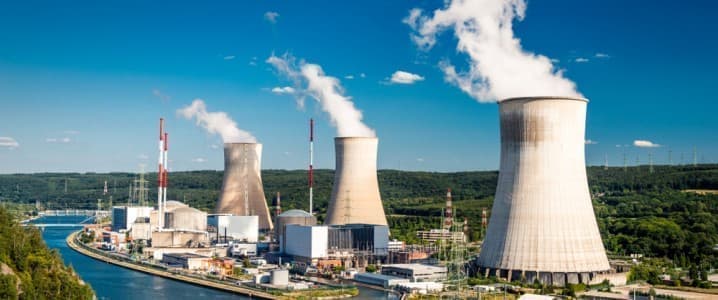
As part of his nuclear turnaround, President Yoon plans on extending the life of working reactors, bringing existing dormant reactors online, and building new nuclear energy capacity. Two reactors in the Shin Hanul power station on the country’s eastern coast, which were supposed to come online back in 2018, have sat idle for the past four years after failed safety tests led the nuclear-averse administration to abandon the plan. President Yoon plans to take up the reins and revitalize the effort to bring the plants up to safety standards as soon as possible. Meanwhile, two new reactors are being designed, and 18 more stations are now slated to remain open well beyond their scheduled closure in 2030. “If Mr Yoon gets his way,” writes the Economist, “nuclear will generate 30-35% of South Korea’s power by 2030, up from 27% in 2021.”
This plan is a divisive one in South Korea, where the populace remains starkly divided on the issue of nuclear power and public safety. In 2017, while sitting President Moon waffled over whether to go forward with plans to build two new reactors at Shin Kori, a Gallup poll found that slightly more Koreans (41%) wanted to scrap the project than wanted to go forward with the construction (40%). However, a lot has changed since 2017. We’ve put more time and metaphorical distance between the 2011 Fukushima nuclear disaster in Japan, and the ultra-tight energy market has put the need for nuclear energy into perspective.
For years, nuclear proponents have argued that the relative dangers of nuclear energy are vastly exaggerated. In fact, a 2013 study by NASA scientists found that overall, nuclear energy has actually saved lives that would have otherwise been lost due to causes associated with air pollution from the combustion of fossil fuels that nuclear has displaced. The model made by the scientists at NASA’s Goddard Institute found that over the past 50 years, nuclear had saved an incredible 1.8 million lives – a number that has surely grown considerably in the decade since the study was published.
And while public health is often the centerpiece of the anti-nuclear argument, the real issue, many argue, is climate change. In order to decarbonize the global economy fast enough to avoid the worst impacts of climate change, we need to fully exploit every low-emissions fuel and energy source we have. According to this argument, eschewing nuclear, a proven and scalable technology, would be irresponsible at best and possibly – or even probably – fatal.
In South Korea, however, the nuclear energy divide is even more complicated than it is in the rest of the world. In addition to being bogged down by concerns about nuclear disasters, the South Korean nuclear industry is also plagued with reports of misconduct and corruption. Over the past decade, a “series of scandals in which thousands of counterfeit parts with fake documentation were found in nuclear plants resulted in the conviction of 68 people for crimes including bribery, collusion and forgery,” the Economist reports. And the looming threat of North Korean cyberattack looms large on the minds of South Koreans. In one instance, North Korean hackers successfully stole nuclear reactor blueprints from the South’s databases.
But the new South Korean president thinks he can turn it all around. In fact, he plans on making South Korea not only a major player in the global nuclear energy market, but an exporter of nuclear energy plants. The country is “betting big” on small modular reactors. These prefabricated reactors could be shipped out to other countries and set up on-site, making nuclear power more affordable worldwide and increasing South Korea’s global energy influence.